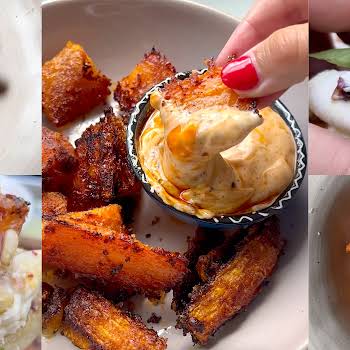
A winter feast: 5 gorgeous seasonal recipes for any festive gathering
By Megan Burns
Fellow food creatives and friends Keith Coleman and Jeni Glasgow host a sumptuous seasonal lunch to celebrate the talents of their neighbouring food producers – a veritable Boyne Valley banquet.
Chef Keith Coleman and food creative Jeni Glasgow have combined their considerable talents to put together a seasonal feast, perfect for sharing.
“For me, cooking is all about welcoming people in a space as if it were my own home,” says Keith. “I’ve always been more interested in sourcing ingredients and finding new layers of flavour than manipulating food with clever techniques. When the people sitting around the table can feel a real connection with the food they’re eating – and have a sense of where it’s come from, and who made it – there is a depth of nourishment to that experience that beats any industry prestige.”
So sumptuous was the meal, with 12 components in total, we weren’t able to fit all the recipes into our Winter 2021 issue, so here are the remaining ones, perfect for completing a perfect seasonal gathering.
Recipes: Keith Coleman and Jeni Glasgow, Styling: Jeni Glasgow, Photography: Shantanu Starick
Winter Root Vegetable Salad
Serves 6

This is a lovely preparation of often maligned root vegetables. The sauce may remind you of a certain kebab shop favourite, or Ranch if you hail from the other side of the Atlantic. This side salad combines wonderfully with roast meat and vegetables.
Ingredients
- 500g beetroot
- 500g baby turnip
- 15g bay leaf
- 100g natural yoghurt
- 100g free-range mayonnaise
- 25g lemon juice
- 25g fresh parsley
- 25g fresh mint
- 10g Dijon mustard
- 4 cloves garlic
- fresh cracked pepper
- flaky sea salt

Method
1 Rinse the root vegetables of any dirt, but don’t peel. Add them to a roasting tray with the bay leaf, a good sprinkling of salt, and enough water to reach halfway up the vegetables. Cover the whole roasting pan tightly in foil and place in a 180ºC oven. Cook for approximately 30 minutes, and check that a fork easily pierces the cooked vegetables. Depending on their size this may take longer, use your intuition. Once cooked, remove the vegetables to a bowl and rub their skins off with your thumbs. Wear latex gloves if staining your hands pink with Beetroot is a concern of yours.
2 Once peeled, cube the root vegetables and place in a mixing bowl.
3 For the dressing add the mayo, yoghurt, Dijon mustard, and mustard to another mixing bowl. Finely grate or chop the garlic and add to the bowl. Finely chop the fresh herbs to this mix also.
4 Season to your preference with good flaky sea salt and fresh cracked pepper.
Salsa Verde for the beef bone broth

Ingredients
This broth is a fantastic way to welcome guests into your home on even the chilliest of winter days. Beef Short Ribs are often overlooked, but make the best broth when cooked lovingly and slowly (see magazine for broth recipe). We use a final flourish of Salsa Verde to bring a lot of freshness and vibrancy to an otherwise rib-stickingly rich dish.
- 4 ribs celery
- 1 bunch parsley
- 1 bunch lovage
- 2 cloves garlic
- 2 tbsp Dijon mustard
- 50g apple cider vinegar
- 250g extra virgin olive oil
- 2 lemons, zested and juiced
Method
1 Salsa Verde takes a similar preparation to pesto, and is best prepared chopped by hand. Chop all your herbs finely. You can swap out herbs as you please, and create your own blend. We enjoy the pungent herbiness of lovage, but you may prefer mint. Use your intuition. Once chopped, add to a large mixing bowl. To this, add the juice and zest of 2 lemons and finely grate the garlic too.
2 Add mustard, salt, pepper, vinegar, and finely chopped celery to the bowl. You should have a fine green paste of sorts.
3 Thin this all out with the addition of extra virgin olive oil. If the resulting Salsa Verde is too sharp, then feel free to add some honey. You could also add some finely chopped capers and anchovies if you’re that way inclined. As long as your Salsa Verde has a nice covering of oil, it will maintain its verdancy in the fridge for a week. Add to boiled potatoes, a chicken salad or basically anything.
Mo Glasgow’s Famous Apple Pie
Serves 8 – 10

Jeni’s mum, Mo Glasgow, makes an incredible apple pie. Delicious shortcrust pastry and a not-too-sweet filling make this a pie to remember. You might think to yourself, how good can an apple tart be? But, until you have tasted Mo’s apple tart everything else pales by comparison.
Key to achieving the best result here is to handle the dough as little as possible. And, it’s a great idea to make a double batch and freeze the rest for another time; you’ll be delighted you did!
Ingredients
For the shortcrust pastry
- 250g plain flour
- 125g unsalted butter
- 1 egg + 1 for eggwash
- 1 tbsp neutral oil (sunflower)
- Pinch salt
- 1 1/2 tbsp iced water (if required)
For the filling
- 5-6 Bramley apples
- 25-40g granulated sugar
Method
1 Sift the flour and the salt. Gently and with a light touch, rub the butter into the flour until it resembles fine breadcrumb. Make a well in the centre.
2 Beat the oil and the egg together and add to the well. Mix quickly to form a soft dough, adding a little iced water if required to bind.
3 Your pastry now needs to relax. Wrap in cling film and rest in the fridge for a least 30 mins before using. Preheat oven to 180°C.
4 Let the pastry come back to room temperature before rolling out. Divide pastry in two. On a floured surface roll out one of the pieces of pastry larger than the 20cm loose-based tin you’re using. Lightly drape it over the tin.
5 Add and arrange slices of apple. Dust apples with a little sugar. Add the second pastry lid. Trim edges. Egg wash top and dust with sugar.
6 Bake at 180°C for 35-40 minutes. Serve with freshly whipped cream.
Jeni Glasgow’s Super Seeded Crackers
Makes approx 15 crackers

These savoury, seedy crackers are delectable and moreish. Simple to make and guaranteed crowd-pleasers too. Anytime we serve them there are gasps of delight – I think people don’t expect a cracker to taste so damn good!
They are wonderful on their own with a glass of wine or beer and really good with cheese. They can also be made with either gluten-free or regular fine oats. The recipe is very forgiving and measurements don’t have to be exact. In addition to seeds, these crackers are really great with a handful of grated parmesan, blue cheese or hard goat cheese – whatever your preference.
The recipe has been adapted from the original by Lilly Higgins.
Ingredients
- 250g gluten-free porridge oats
- 60-70g melted butter (err on the generous side for a richer cracker)
- 1 egg white whipped
- 100-200g assorted seeds (eg flax seed, chia seed, sunflower seed, linseed, nigella seed, fennel seed, caraway etc)
- 50-100ml water (as required)
Method
1 Preheat oven to 180°C. In a medium-size bowl combine oats, seeds, grated cheese (if using) melted butter and whipped egg white.
2 Bring it all together with a wooden spoon or spatula.
3 Add small amounts of water at a time to ensure the mixture forms a ‘dough’ – be careful not to make it too wet.
4 Cover the baking tray with a sheet of parchment paper and tip the dough out onto it. Cover with a second sheet & roll directly on the baking tray – ensure even depth. If you prefer thicker crackers, remember to increase the baking time.
5 Cut into desired shape, squares or rectangles.
6 Bake in the hot oven at 180°C for 10 – 15 mins turning halfway through. The crackers are ready when they are crisp and dry.
7 Sprinkle with a little flaky salt if desired and leave to cool. Serve and enjoy with drinks and cheese or store in an airtight container and use within a couple of days
Jeni Glasgow’s Damson ‘Plumbrillo’ or Pate de Fruit
Makes approx 850-900g
This is a thick, sliceable preserve that is excellent served with cheese in the same way that we enjoy membrillo – but finding quince is a lot harder than damson plums!
Depending on the season you could perhaps substitute pears, but something about the deep ruby hue of the damson plum is our favourite. We love to slice the set paste into dainty cubes and dust in a little granulated sugar and serve after dinner as a petit four. They are intensely fruity and are a lovely sweet moment at any festive gathering. The preserve keeps for ages and also makes for a wonderful gift (if you can bear to part with it that is!) Store in the fridge.
Ingredients
- 2kg damsons
- Approx 750g granulated sugar
Method
1 Put the damsons in a large preserving pan or heavy pot, add a couple of
tablespoons of water and bring slowly to a simmer, stirring as the fruit begins to release its juices. Leave to simmer until completely soft. Tip the contents of the pan into a sieve and rub it through to remove the stones and skin, leaving you with a smooth damson purée.
2 Measure the purée by volume. For every 500ml, add 350g sugar, and combine in a large, heavy-based pan. Bring to a simmer over a low heat, stirring to dissolve the sugar, then cook gently, stirring regularly so it doesn’t catch, until reduced to a thick purée. It is ready when you drag the spoon across the bottom of the pan and the base stays clearly visible for a second or two. This can take up to an hour (or more) of gentle, simmering and stirring.
3 Pour the purée into very lightly oiled shallow plastic containers and leave to cool and set. It will keep for a very long time in the fridge.
4 When ready to serve cut into cubes, dust lightly with granulated sugar and serve as a petit four or served with cheese.

This article originally appeared in The Winter 2021 Issue of IMAGE Magazine.























